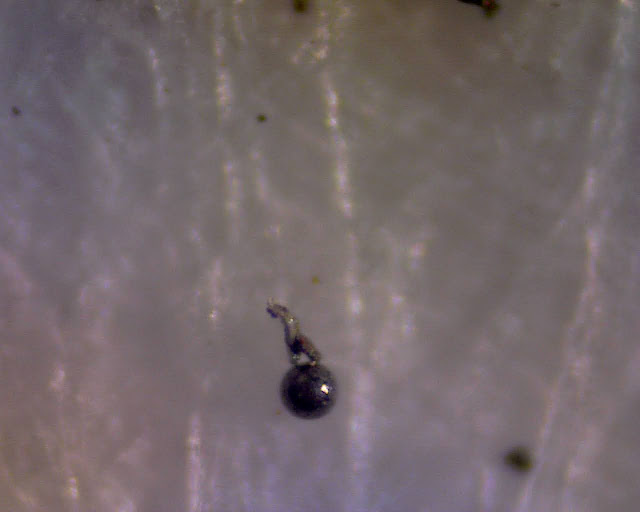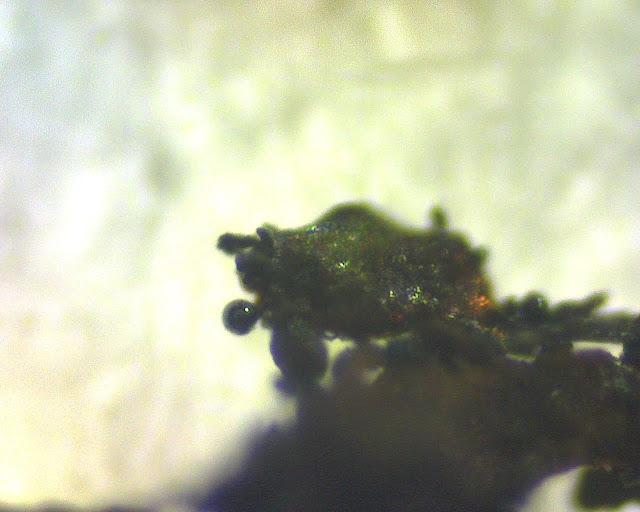Micrometeorites are easy to find!
Tons and tons of space dust (micrometeorites) fall to Earth every day. It lands on rooftops and then gets concentrated in roof gutters and the soil under downspouts.
Some micrometeorites are tiny glass beads, similar to tektites. Melted glass "raindrops". To find those you can dig up soil and sort through it under a microscope.
A little easier to gather are the relatively rarer--though easier to find--iron containing micrometeorites. Here's how to do it:
1. Put a strong magnet in plastic.
2. Run the magnet in your gutters; on your roof; or around your gutter downspouts.
3. Over a piece of clean white paper take the plastic off the magnet and all the little magnetic pieces of matter will fall off onto the paper.
4. Funnel the matter into a microscope slide (one with a "well" depression will work best) or even a white 3x5" index card.
5. Start your search under the microscope.
You'll have to do some online research to see what micrometeorites tend to look like. They're either perfect spheres or slightly ovoid "bead" shapes. A common problem with hunting under higher magnifications is that most microscopes are set up to view transmissively with light coming from underneath and flowing through the object (usually transparent cellular matter). That will work just great for glass micrometeorites--but for the iron ones (and anything else picked up along the way) things will be silhouetted. Try getting a strong flashlight and aiming it from above the slide. This will help during photographing.
My microscope has two eyepieces--and I've removed one of them and replaced it with a USB camera that came with a suite of video and photo software. These USB cameras can be found online for less than $50. They're nice because you can move the microscope stage around (x and y axis) and also focus (z axis) while staring at your computer monitor instead of hunched over the actual microscope.
The software also lets you take photos and video, annotate things with arrows, add text, adjust the brightness/contrast/color/white balance, zoom in and do all sorts of other cool stuff.
If you don't have all that you can just stick your cellphone right up to the eyepiece and snap a photo. See my other posts of afocal astrophotography for all the cool things you can do on the cheap.
So, what did I find my first trip out micrometeorite hunting? Here's some photos from my microscope:
First will start out with micrometeorites. This shot shows two of them. Most of this photo is dark a silhouette. This is how you will be hunting. To take the photo I shined a really bright Maglite flashlight from above. That flashlight is the only reason you can see the highlights on the left sphere. Other wise it would look flat black.
Not a micrometeorite...but it's still neat to see "it"...whatever "it" is. Roof shingle piece? Grit? Sand? Soil? I dunno.










